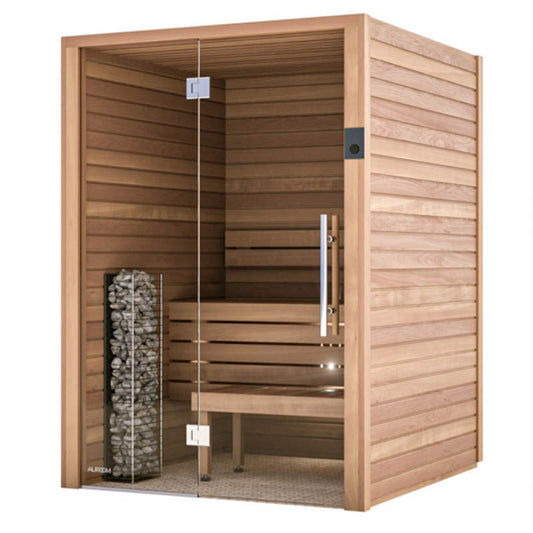Traditional Sauna Can Be Fun For Everyone
Things about Traditional Sauna
Table of Contents7 Simple Techniques For Traditional SaunaThe Basic Principles Of Traditional Sauna Some Known Incorrect Statements About Traditional Sauna Traditional Sauna for DummiesThe smart Trick of Traditional Sauna That Nobody is Discussing
A lot of the weight lost in a sauna is water loss and is re-gained upon rehydrating. Without a doubt sauna can be an essential component of a healthy and balanced weight loss program. To consider the distinctions between conventional and IR saunas, I will divide these right into verifiable, theoretical, and made differences.Thus, the most popular point in the saunawhich goes to the ceiling straight over the sauna heateris usually in between 185 and 190 F. Claims that a typical sauna surpasses 200 F is merely not true and not appropriate for electric saunas marketed in the United States. The temperature level for a far-infrared sauna is typically set in between 120 and 140 F; nonetheless, unlike the traditional sauna, the goal in and IR area is not to accomplish a heat.
As a result of this, the temperature level distinction is practically pointless, considering that excessive sweating leads to both sauna kinds, yet the technique of warming the body is various. In an IR sauna the bather will certainly feel hot and will sweat a lot, however at a lot lower temperature levels (Traditional Sauna). Therefore, if the goal is to invest longer amount of times in the sauna, the IR sauna is a great choice
When a standard sauna has been correctly heated, the sauna wall surfaces are warm, the air temperature has achieved set temperature level and the rocks are incredibly warmed. As an interesting side note, the warmed walls and the rocks are giving off far-infrared heat, combined with the heated air, to develop an "wrapping up warm".
All about Traditional Sauna

When the heat is accomplished, the aspects cycle on and off to preserve the high temperature level. The majority of traditional sauna individuals delight in pouring water over the rocks to create vapor to increase sauna moisture degrees. The benefits of putting water over the rocks consist of: making the room more comfy, dampening the nasal flows, and enabling the usage of aromatherapy by blending essential oils with the water.

When the energy gets in the body, it creates the body temperature level to raise and eventually results in perspiration. In an infrared sauna it's essential for the emitters/heaters to remain on virtually continuously. Since there is no mass of rocks to keep heat, the sauna will cool if the emitters Find Out More shut down.
As stated above, the sauna bather in an infrared space desires to place himself in front of running emitters to obtain maximum gain from the warmth. The heating time for the two areas can be very various, depending upon exactly how the rooms are made use of. For a conventional sauna, a bather should enable 30-40 minutes for the area to attain a preferred temperature and to appropriately pre-heat the rocks.
Excitement About Traditional Sauna
A well built sauna will normally attain a temperature of 150-160 F in regarding 30-40 mins. For hotter temperatures, the area might require to warm for a longer period.

Standard saunas often tend to be larger (thus make use of even more electrical energy) than infrared saunas, although traditional saunas are absolutely readily available in one and two person sizes. For a two-person typical sauna, 5x6 or 5x7 size is most popular. The leading bench can pleasantly seat 2 or three people and is also long sufficient to rest throughout the sauna session.
Getting The Traditional Sauna To Work
The ordinary cost per kWH of electrical power in the U.S. is around $0.11, so a 4.5 kW heating unit will certainly cost you can try this out around $.50 to compete one hour, if the heating system runs constantly for one hour. Typically a sauna heater will certainly run for 75% of the very first hour and 50% of subsequent hours on given that the aspects cycle once the set temperature is achieved.

Finally, there is a hardly ever talked about difference in the social experience in between the two areas. While our culture has actually shed several of the social benefit of the standard sauna experience, it can be really socially gratifying (Traditional Sauna). From family time in the sauna, to heart-felt conversations with loved ones, to sauna partiesthe standard sauna experience can bring about intimate interacting socially
The Main Principles Of Traditional Sauna
A lot of higher end infrared rooms consist of tinted light therapy, sound systems and full-glass fronts.